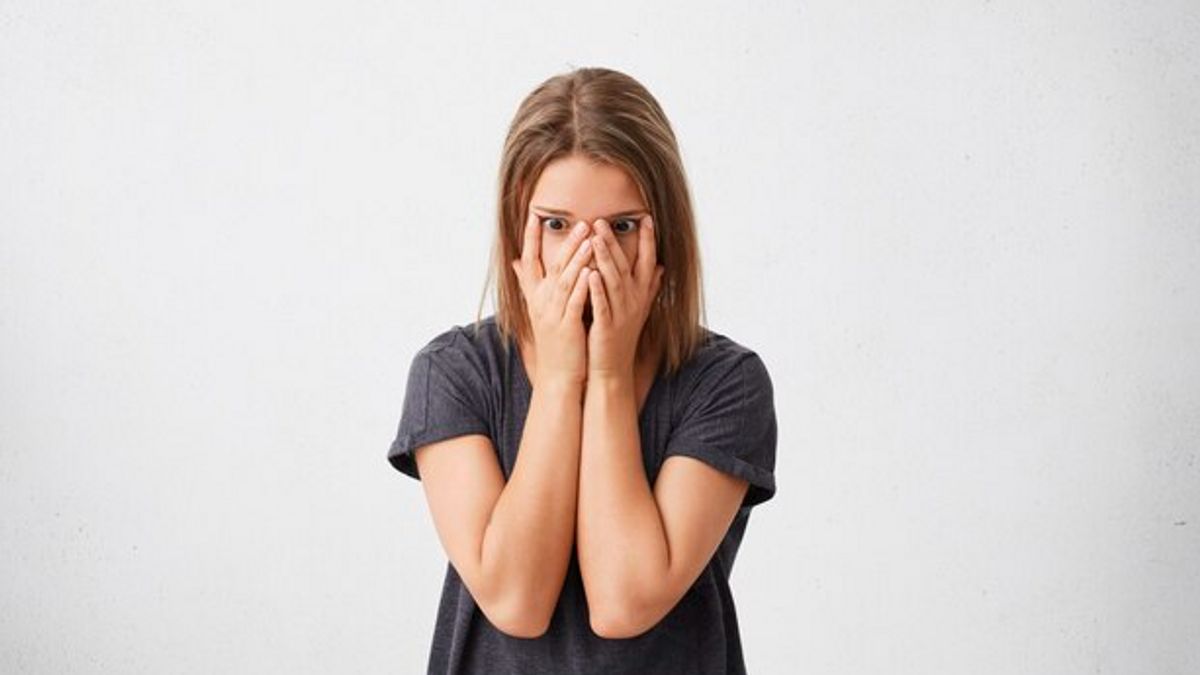JAKARTA - Panic attacks and anxiety can appear at any time. Symptoms can be in the form of heart palpitations, chills, and tremors that could indicate something more serious such as a panic attack.
The term panic attack and anxiety disorder are often used alternately, so recognizing each disorder is not always easy.
Popsugar quotes an explanation from two mental health experts about the difference in panic attacks with anxiety, which can be useful for determining the right mental health care.
Psychiatrist and chief medical officer for Murror's self-care application, Vania Manipod, DO, said that anxiety attacks are often not as severe as panic attacks.
According to him, anxiety attacks tend to disappear, and usually do not interfere with daily activities.
New York University of Grossman Psychologist and clinical professor Amanda Spray, PhD, ABPP, said that panic attacks exist in the Diagnostic and Statistical Manual of Mental Disorders Fifth Edition (DSM-5), which is used by mental health professionals to diagnose conditions, while anxiety attacks do not exist.
The DSM-5 described panic attacks as a sudden spike in intense fear or intense discomfort that peaked in minutes.
According to DSM-5, symptoms of panic attacks include palpitations, chest pain, and shortness of breath; chills even though they are not cold, shaking, and sweating or feeling a hot sensation.
Other symptoms can include the appearance of feelings of strangling; fear of losing control or fear of death; nausea or stomach disorders; feeling dizzy, unstable, or faint; parestesia (satisfaction or numbness); derealization (unrealized feeling); or depersonalization (separation from oneself).
According to Dr. Manipods, there are many types of anxiety disorders, including social anxiety, general anxiety, and various phobias.
SEE ALSO:
Symptoms of general anxiety disorders include excessive anxiety, muscle tension, anxiety, fatigue, difficulty concentrating, and difficulty sleeping.
Dr. Spray said that the difficulty of dealing with more persistent general anxiety disorders could be the same as having difficulty overcoming repeated panic attacks. In fact, people who experience anxiety disorders may also experience panic attacks.
According to Dr. Manipod, occasionally experiencing anxiety is a natural thing. However, if anxiety starts to interfere with everyday life then that condition can be diagnosed as an anxiety disorder.
It is important to remember that people can still experience sporadic anxiety attacks without anxiety disorders. Psychologists suggest several steps to calm down when experiencing panic attacks or anxiety, the first is recognizing attacks.
Dr. Manipod said awareness about conditions can help people cope with any physical symptoms. According to him, repeating the words "I will be fine" or "I will not die because of this" can also help people calm down when facing attacks.
The next step that can be done is to take a deep breath. Unable to control the breathing when experiencing hyperventilation can worsen physical symptoms and exacerbate panic attacks.
Dr. Manipod and Dr. Spray recommends calming breathing exercises, such as regulating breathing by making exhalation longer than taking a breath.
In addition, people who feel pressured are advised to seek help, such as consulting with a mental health professional.
Handling mental health problems will depend on the condition of each person. However, Dr. Manipod says treatment is quite consistently used in handling anxiety and panic attacks. Psychotherapy, including cognitive behavioral therapy, is also used to help people overcome anxious thoughts.
The English, Chinese, Japanese, Arabic, and French versions are automatically generated by the AI. So there may still be inaccuracies in translating, please always see Indonesian as our main language. (system supported by DigitalSiber.id)


















